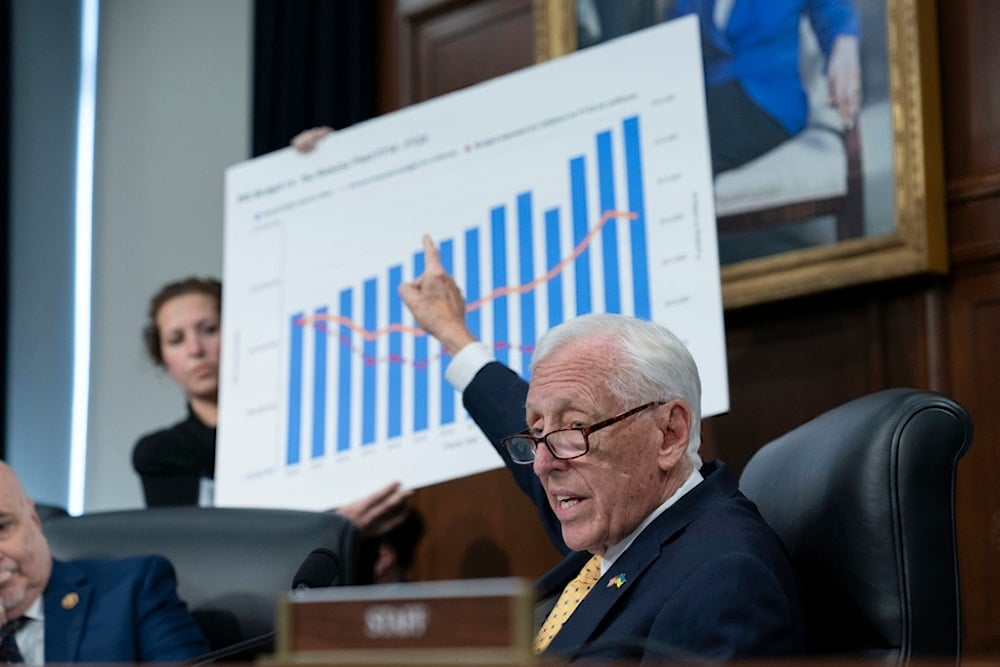Treasury yields rise after interim US-China tariff deal announced
US Treasury yields jumped as the US and China agreed to sharply cut tariffs, easing trade tensions and shifting expectations for Federal Reserve policy.
-

Rep. Steny Hoyer, D-Md., speaks during the House Committee on Appropriations, Subcommittee on Financial Services and General Government, oversight hearing of the US Department of the Treasury on Capitol Hill in Washington, Tuesday, May 6, 2025. (AP)
US Treasury yields rose on Monday after Washington and Beijing reached a major agreement to significantly reduce tariffs on each other’s goods, signaling a de-escalation in trade tensions that investors greeted with optimism, CNBC News reported.
The 10-year Treasury yield climbed 6.6 basis points to 4.441%, while the 2-year yield surged over 10 basis points to 3.985%. Yields move inversely to bond prices, and a single basis point equals 0.01%.
China, US suspend most tariffs
The breakthrough trade deal, unveiled Monday, involves the suspension of most tariffs that both countries had imposed in recent years. According to the agreement, tariffs on each side’s goods will be reduced from 125% to 10%.
“When considered alongside last week’s announcement of a US/UK trade deal, the sentiment regarding Trump’s trade war has clearly shifted in a positive direction,” said Ian Lyngen, head of US rates strategy at BMO. “Thawing of trade relations between the US and China will afford the Fed further flexibility.”
At the peak of the trade conflict, the US had levied tariffs up to 145% on Chinese goods, while China had countered with a 125% rate on American imports. Economists have long warned that the prolonged tariff war risked pushing both the US and global economies into recession.
Market uncertainty unchanged
US Treasury Secretary Scott Bessent, who led the negotiations with Chinese officials over the weekend in Switzerland, said the talks were “very productive” and that the location in Lake Geneva contributed to the calm and constructive tone of the discussions.
“We have reached an agreement on a 90-day pause and substantially moved down the tariff levels. Both sides on the reciprocal tariffs will move their tariffs down 115%,” Bessent said at a press conference. He added in an interview with CNBC’s Squawk Box that he expects another round of talks to take place within the next few weeks to work toward a broader trade agreement.
The easing of trade tensions is also shifting expectations around monetary policy. With recession fears receding, the Federal Reserve may find less need to cut interest rates in the near term. According to CME’s FedWatch Tool, the market now sees only an 11.3% chance of a rate cut at the Fed’s June 17–18 meeting.
Moreover, despite the US easing tariffs on Chinese goods as part of a broader de-escalation in trade tensions, Treasury bond yields are still rising, which indicates deeper concerns about long-term economic instability. Investors may view the tariff rollback as a short-term relief, but the continued upward movement in yields suggests lingering uncertainty over fiscal policy, inflation risks, and the Federal Reserve’s next steps.

 3 Min Read
3 Min Read








